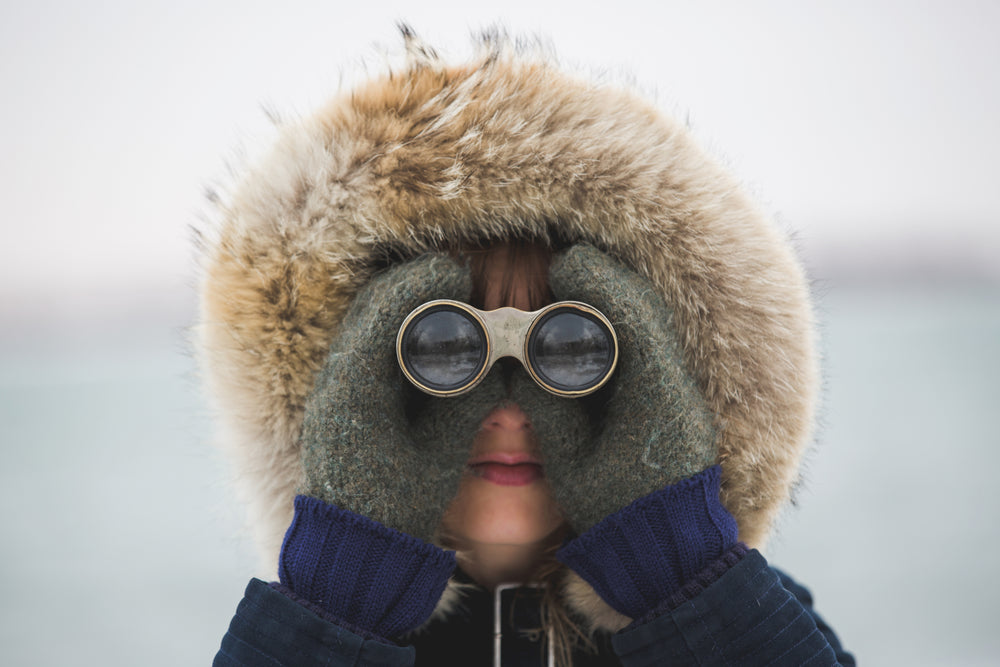400 Winter Friends

In February 2018, my husband and I traveled to Michigan's Upper Peninsula to the northernmost area, the Keweenaw Peninsula, to look at a home on acreage that had just recently been offered for sale. It was roughly 10 hours from our current home in Rockford, Michigan which is in Kent County, near Grand Rapids. The listing agent had added a drone video of what was a very large amount of whitetail deer in a line eating near the barn. That was intriguing to us.
Come to find out, the property was in what is called by the Michigan DNR, a "Deer Wintering Complex." That is where the deer as the snow begins to fall and their browse is harder to find will travel to (typically around 10 miles but possibly up to 50 miles) in order to find food.
We made an offer, it was accepted, and since it had been a winter with over 300" of snow having fallen we were finally able to begin our move over Memorial weekend in late May. Three trips with the largest U-Haul trucks available. It was like moving to heaven, albeit a very rock heaven. You see, our land is on a series of lava flow ridges. The largest lava flow in history on earth. Therefore, the land is hard basalt rock with loose rock and a little bit of soil. Not great for gardening but it is copper country so you can find bits and pieces of both native and float (copper pieces that were deposited by the glaciers).

The folks that lived here previously had fed around 400 deer every winter with help from a local club, that with donations and fundraisers purchased the supplemental pellets that they and other local feeders fed to the deer. These pellets were approved by the DNR for supplemental feeding between the first Monday after January 1 and May 15. Supplemental feeding is approved by the DNR for only specific locations that meet certain criteria. Our county (Keweenaw Co.) has the fewest number of deer (and people) in all 83 of Michigan's counties, and with typically over 300" of snow and the snow base being between three and four feet during the hard winter months, without the supplemental feeding the herd would suffer both from mortality during the winter from starvation, but also from low birth numbers in the spring from does who did not get enough nutrition to birth healthy fawns.
We assured the previous owners that we would continue feeding and we are now finishing up our fourth season. Typically we put out around 20 tons (40,000 pounds) of pellets per season. We feed every single day during that time frame of the first week of January to possibly the middle of May. There is no day off. Some seasons end early for as soon as the snow melts enough that the deer can get around and find browse again, they leave for their summer range. That can be as early as mid-April. We look forward to those seasons. It's the ones that drag on with deep snow and low temps that are so difficult for even with the supplemental feed, the deer get weaker and weaker, especially the fawns, and we lose some.

We don't have very many that live on our property all year. Perhaps a dozen, or so. The majority leave as the snow melts and then quite quickly. One day you realize that there are only about 20 or so left, and you may catch a glimpse of a fawn during the summer but you just hope that they stay safe and that the ones you have named and come to love, return the following January. The photo above is Jo. She had a bad leg, so during the winter of 2021 I fed her away from the others, so that she didn't have to try to compete for the food in the midst of flying hooves. She trusted me to provide her with a serving of pellets, a sprinkle of corn and acorns and even a bucket of water so that she didn't have to go down the ridge for a drink while eating the dusty pellets. It was nice to sit with her in quiet companionship as she ate her evening meal. She didn't come back for the 2022 season. I lost a friend.
But, each year there are new friends. Like this fawn, whose name is Tuck. Isn't she just the cutest little thing? Hopefully, she will be one that will make it back January 2023!



